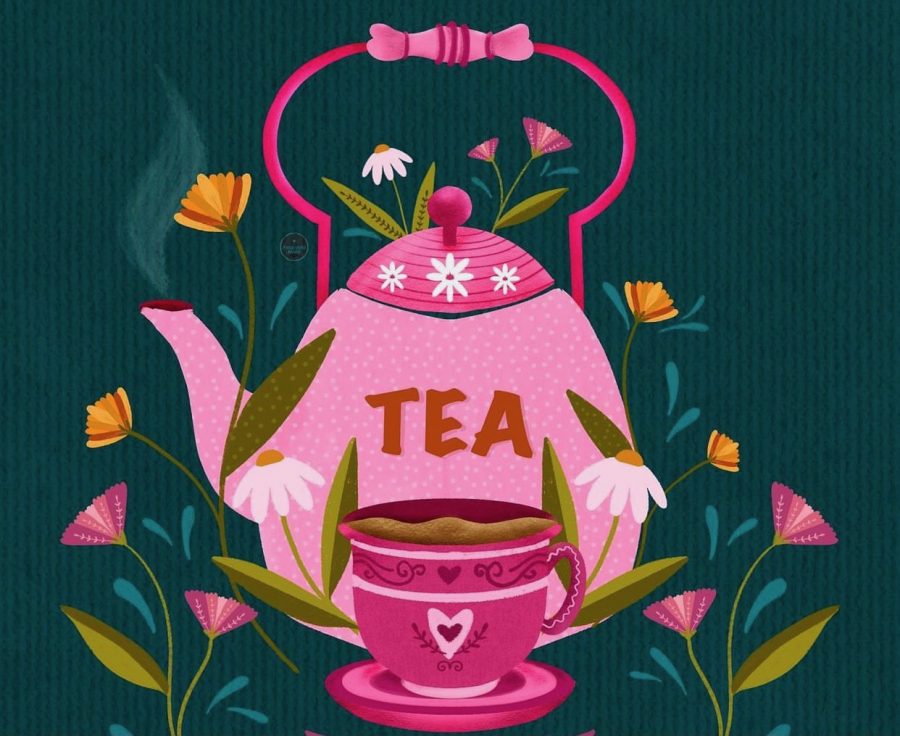Tea Time
The sorcery of tea can not only bring together loved ones, but also cure them/
September 23, 2021
It is often said that tea is liquid wisdom. Given its range spanning from Asia, Europe and the Americas, tea drinkers may be spiritually inspired by its ethnic sources.
According to legend, in 2732 B.C., Emperor Shen Nung of China discovered tea when leaves from a wild tree blew into his pot of boiling water. The aroma caught his attention, so he then drank what we now call tea.
Tea quickly became a vital commodity of trade and status. During the 1600s era of globalization, the British Royal family, seeking full control and profits over trade, chartered the East India Company and granted it a monopoly on all trade throughout Asia and Eastern Africa.
In the next century, the American Revolution was enkindled by the infamous Boston Tea Party, when the British added a tea tax to their American tea market. Enraged colonists dumped tea from the now British East India Company into the Boston harbor.
Tea is more than just a beverage – it is medicinal magic. It is linked to longevity and lessens the likelihood of heart attacks and strokes. It is rich in antioxidants and contains way less caffeine than an average cup of coffee.
Research has shown that tea can influence psychopathological symptoms such as reducing anxiety and cognition by broadening your attention span and brain function.
Herbal tea is known for its healing properties. For example, chamomile tea helps to reduce menstrual pain and muscle spasms, improves sleep and relaxation, and reduces stress. Peppermint tea contains menthol which soothes an upset stomach. Ginger tea fights morning sickness and relieves joint pain. Lastly, hibiscus tea lowers blood pressure and can weaken your sweet tooth.
Afternoon tea and high tea may sound the same since they are considered social activities rather than relaxing ones, but they are rather different in terms of what is eaten with the tea. The aesthetic of afternoon tea is more popular as tea is served along with cakes, pastries and other small delectables. High tea is a light supper that is served with meat and fish. Before you host any tea party, be sure to have the basic wares needed – a tea pot, a teacup and saucer set, a tiered pastry stand, a sugar pot/spoon, and a mini pitcher for creamer/milk.
Some popular teas include:
Green Tea – Made with steamed tea leaves and can restrict the growth of bladder, breast, and stomach cancers; matcha is derived from green tea, which is a fine powder made from the entire leaves of tea bushes grown in the shade.
Black Tea – Made with fermented tea leaves and has the highest caffeine content. Black teas are the base for flavored teas like Indian chai.
Oolong Tea – A traditional Chinese tea that is wilted under the sun and partially oxidized.
According to Statista, the most popular tea brands in the U.S. are Lipton, ranking #1 with 218 million dollars in sales in 2020, followed by Bigelow, Private Label, Twinings of London and Celestial Seasonings.
Unsurprisingly, the coffee market is still greater than tea. Considering most Americans are working class, consumers need as much caffeine as they can tolerate to survive the day.
Whether you are in your pajamas or dressed to a T for an afternoon tea, enjoy sipping this simple yet historic refreshment.




